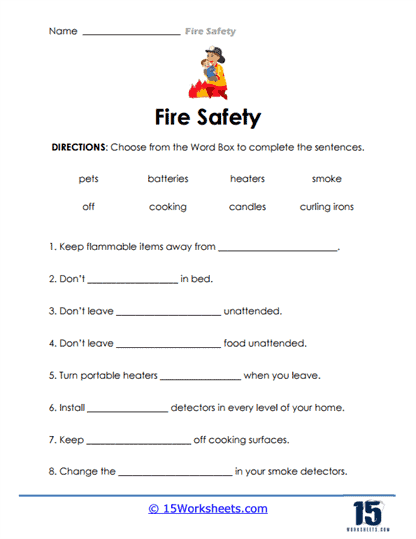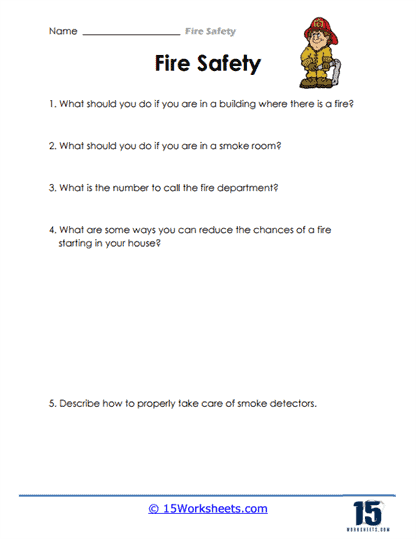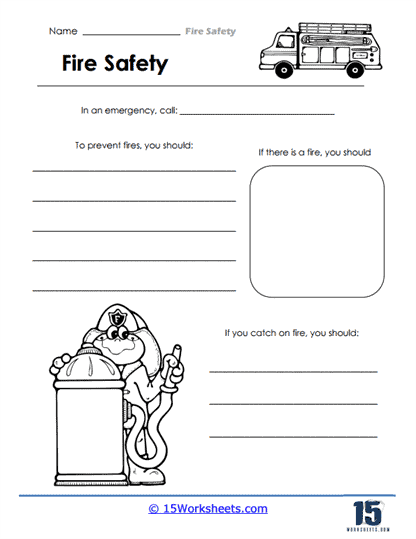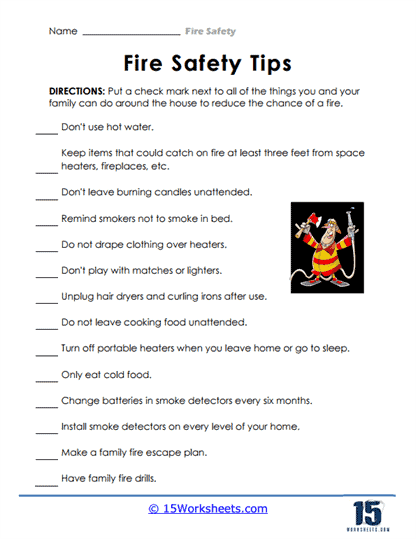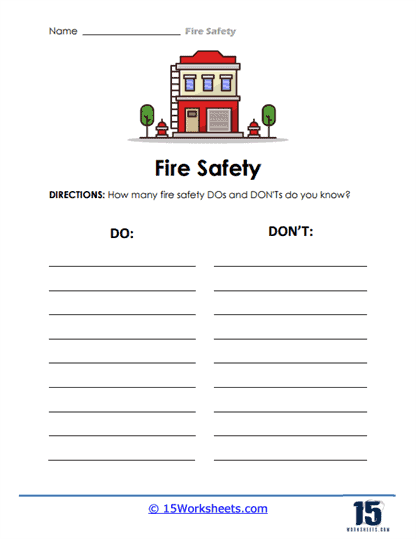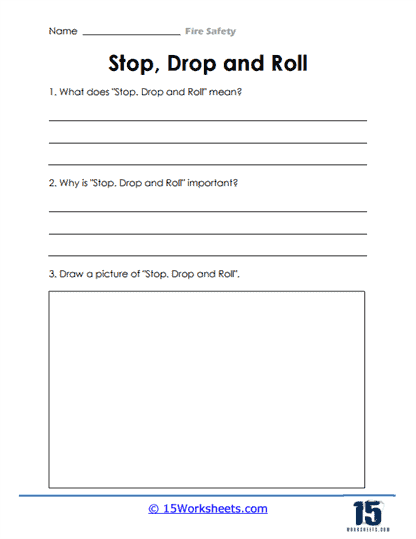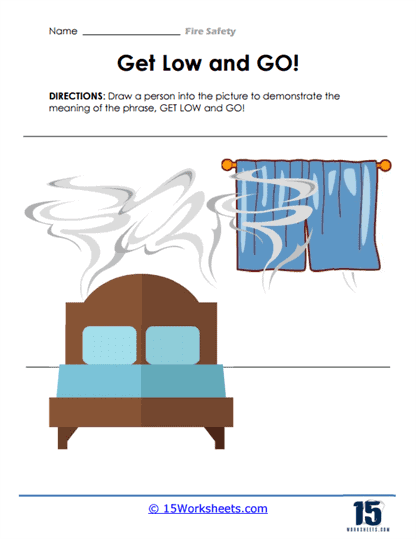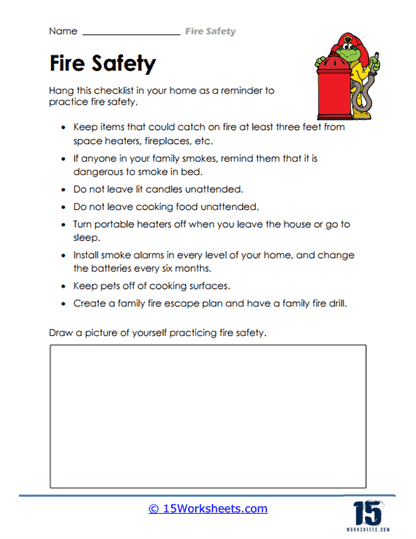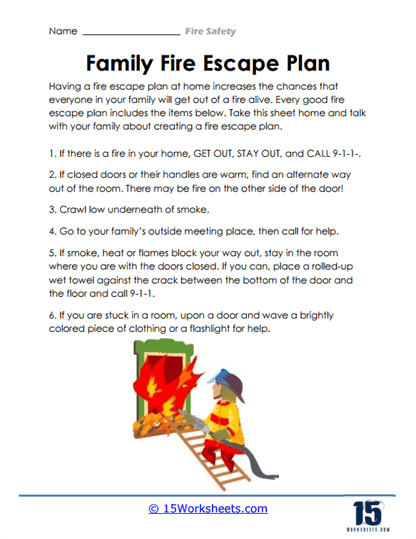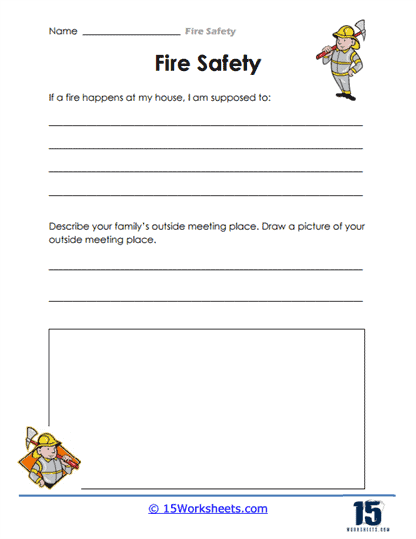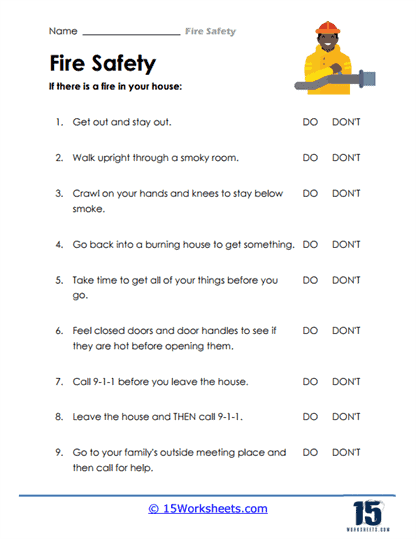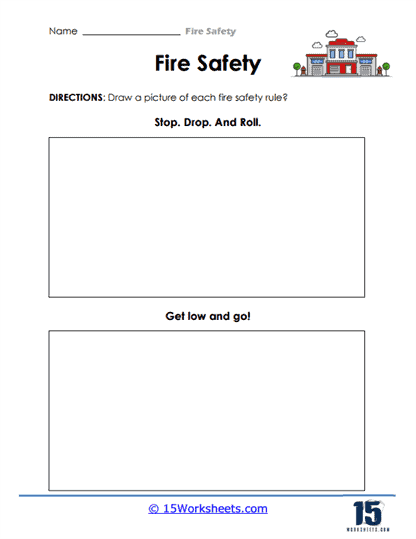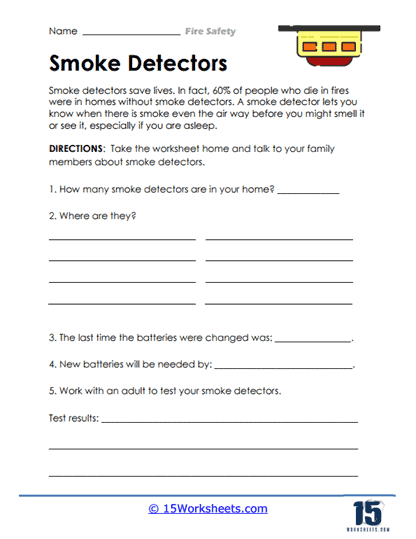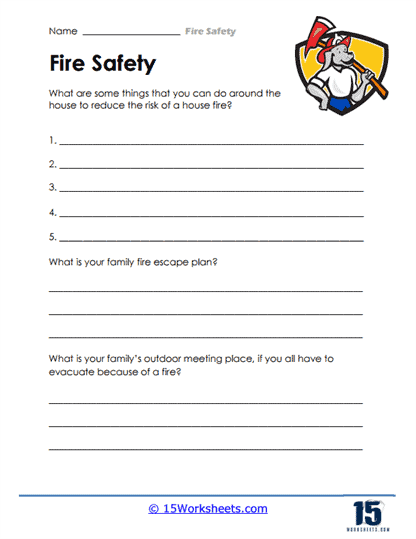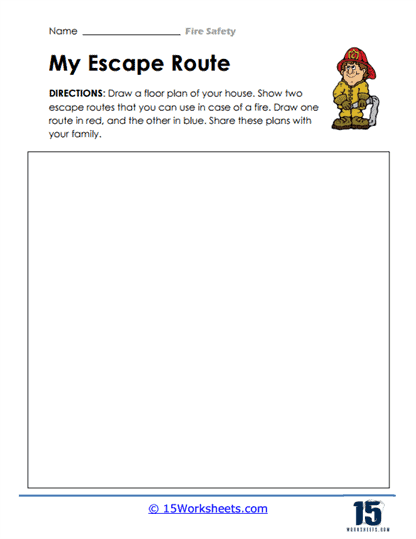Fire Safety Worksheets
About These 15 Worksheets
These worksheets are essential tools that can help save lives by instilling critical knowledge and skills in students of all ages. Designed to teach and reinforce vital fire safety concepts, these worksheets go beyond just the basic facts. They are crafted to engage students actively, helping them understand the real dangers associated with fire and equipping them with practical knowledge they can apply in real-world situations. Through a mix of information, activities, and interactive exercises, students learn how to prevent fires, recognize fire hazards, and respond effectively in case of a fire emergency.
The importance of fire safety cannot be overstated. Every year, thousands of homes, schools, and buildings face the devastating effects of fire, often leading to tragic loss of life and property. The role of fire safety education is to mitigate these risks by empowering individuals-especially young people-to take the necessary precautions and act decisively during emergencies. Fire safety worksheets, therefore, serve as the first step in building a culture of safety and preparedness.
One of the key areas these worksheets focus on is fire prevention. Prevention is always better than cure, and by educating students on how to spot potential fire hazards in their surroundings, we help them become more vigilant. Worksheets often include activities that teach students how to identify common fire hazards, such as overloaded electrical outlets, improper storage of flammable materials, and unattended open flames like candles or stovetops. Additionally, they may encourage students to perform safety checks at home or school, fostering a proactive approach to fire safety. These exercises help create an awareness that fire prevention is everyone’s responsibility, and small actions, such as ensuring smoke alarms are functional or unplugging appliances when not in use, can make a significant difference in preventing a disaster.
Another crucial component of fire safety worksheets is the focus on safety equipment. Knowing how to properly use fire safety equipment can be the difference between life and death in a fire emergency. Students are introduced to various types of equipment, including smoke alarms, fire extinguishers, fire blankets, and the importance of clear, accessible escape routes. Through these worksheets, they learn not only what this equipment does but also how to operate it. For example, worksheets might instruct students on how to check if a fire extinguisher is functional, or how to create and practice an escape plan with their family. This hands-on approach ensures that students are not just passive recipients of information, but active participants in their own safety.
Fire emergencies can be chaotic and overwhelming, especially for children, which is why emergency procedures are a central theme in fire safety education. Worksheets often guide students through step-by-step instructions on what to do if a fire occurs. They may ask students to practice dialing emergency numbers, such as 911, and teach them how to provide important information to first responders. Activities might include filling in missing steps in a fire evacuation plan, drawing their own escape route from home or school, or creating an emergency contact list that they can refer to in a crisis. These exercises help students internalize the importance of staying calm, acting quickly, and following established procedures during an emergency, potentially reducing panic and confusion when seconds count.
The behavior of fire is another fascinating yet critical aspect covered in fire safety worksheets. Understanding how fire behaves helps students appreciate the seriousness of fire safety. They learn about the fire triangle, which consists of fuel, heat, and oxygen-three elements necessary for a fire to ignite and spread. Through engaging activities, students explore how fires grow and spread, emphasizing the importance of early detection and rapid response. These lessons might delve into the role of smoke and heat, why closing doors during a fire can slow the spread of flames, and how the materials around us can either fuel or help contain a fire. This scientific understanding of fire can make students more cautious and alert to their environment, knowing that fire is unpredictable and dangerous.
Fire safety vocabulary is also integral to these worksheets. Being familiar with key terms such as “combustible,” “flammable,” “evacuation,” and “firefighter” can enhance a student’s ability to communicate effectively during a fire emergency. Worksheets often include exercises that introduce and reinforce these terms, sometimes through matching activities, crossword puzzles, or sentence completion tasks. This not only aids comprehension but also ensures that students can articulate their understanding clearly and confidently, whether they’re explaining fire hazards or reporting an emergency.
In addition to these informative sections, fire safety worksheets frequently include interactive activities to engage students. Games like word searches, matching exercises, and even coloring pages related to fire safety can make learning both fun and memorable. These activities are designed to reinforce critical information in a manner that is enjoyable and accessible, especially for younger students. For instance, a word search might feature terms like “fire drill,” “escape,” and “alarm,” while a matching game could help students pair fire safety equipment with its appropriate use. By transforming fire safety education into a dynamic, hands-on experience, students are more likely to retain the information and feel empowered to take action when needed.
At What Age Do Kids Learn Fire Safety?
Basic fire safety education typically begins around preschool age, usually between 3 to 4 years old. At this age, children can start to understand simple fire safety concepts, such as “stop, drop, and roll,” or the danger of playing with matches or lighters. Teachers and parents may also begin introducing the concept of firefighters as community helpers who put out fires.
As children grow older and enter elementary school (around ages 5-7), they can begin learning more complex fire safety rules. This might include understanding how smoke detectors work, the importance of having a family escape plan, what to do if they see smoke or fire, and how to call emergency services.
By the time they are in middle school (around ages 11-13), they should have a thorough understanding of fire safety and prevention, and they should be able to handle emergency situations responsibly.
Remember, education should be age-appropriate and ongoing. Even after initial lessons, it’s important to periodically review and reinforce these safety measures. Interactive and engaging methods, like drills, demonstrations, and discussions, can make the learning process more effective.
What are the Basic Fire Safety Rules for Kids?
Educating children about fire safety is a crucial responsibility of parents, caregivers, and teachers, equipping them with the necessary understanding and response mechanisms for potential fire emergencies. The foundational rule is making sure children understand that fire is not a toy. They should be explicitly taught that matches, lighters, candles, and stoves aren’t playthings. Despite the intriguing nature of fire, they must comprehend its destructive potential. The use of real-life stories or age-appropriate videos could drive home this point effectively, ensuring children grasp the seriousness of fire safety.
One of the most essential instructions to ingrain in children is the “Stop, Drop, and Roll” rule. This method, though simple, can be lifesaving if a child’s clothes catch fire. In such a situation, children should immediately stop moving, drop to the ground, and roll repeatedly to extinguish the flames. It’s also important to emphasize covering their faces with their hands to protect it from the flames. Regular drills can help in cementing this rule in their minds.
Simultaneously, kids should be made aware of the dangers of smoke. Smoke inhalation, often overlooked, can be more lethal than the fire itself due to its suffocating and disorienting effects. Children should be instructed to stay as low as possible during a fire as smoke rises and cleaner, breathable air is closer to the ground. This principle can be practically demonstrated using age-appropriate activities or experiments.
Familiarity with smoke detectors forms another critical aspect of fire safety. Children should be taught to recognize the sound of a smoke detector and understand it as a warning sign of a potential fire. Regular testing of smoke detectors can acquaint them with the sound and reassure them of its protective role in the home.
Another crucial rule is the need for visibility during a fire. Children must be explicitly told not to hide in closets or under beds in the event of a fire. Instead, they should focus on evacuating the building or, if that’s not possible, alerting others of their presence by making noise. This can help rescuers locate them more quickly.
A crucial part of fire safety education is creating and practicing a fire escape plan. Such a plan, featuring at least two exit routes from each room, if possible, should be thoroughly known to every family member. Regular practices, including night-time drills, can instill confidence in children and ensure that they react appropriately during a real emergency.
Furthermore, a safe meeting spot outside the home should be established. This serves as a rendezvous point where family members can regroup and check on each other after escaping a fire. The importance of staying put at this spot should be stressed to prevent children from wandering off, which could lead to unnecessary panic and confusion.
One of the most important fire safety rules is to resist the urge to re-enter a burning building, regardless of what’s left behind. This point should be stressed repeatedly as the instinct to retrieve beloved items can be strong, especially in children.
Lastly, knowing how to contact emergency services is vital. In the U.S., this would be 911. Children should know their complete address so they can provide it to the emergency dispatcher. It’s also crucial to explain when it’s appropriate to call emergency services to avoid false alarms. All these rules, taught in an age-appropriate manner, can ensure children are prepared, not scared. Their goal is to empower children to act responsibly during a fire, potentially saving lives and reducing damage.

